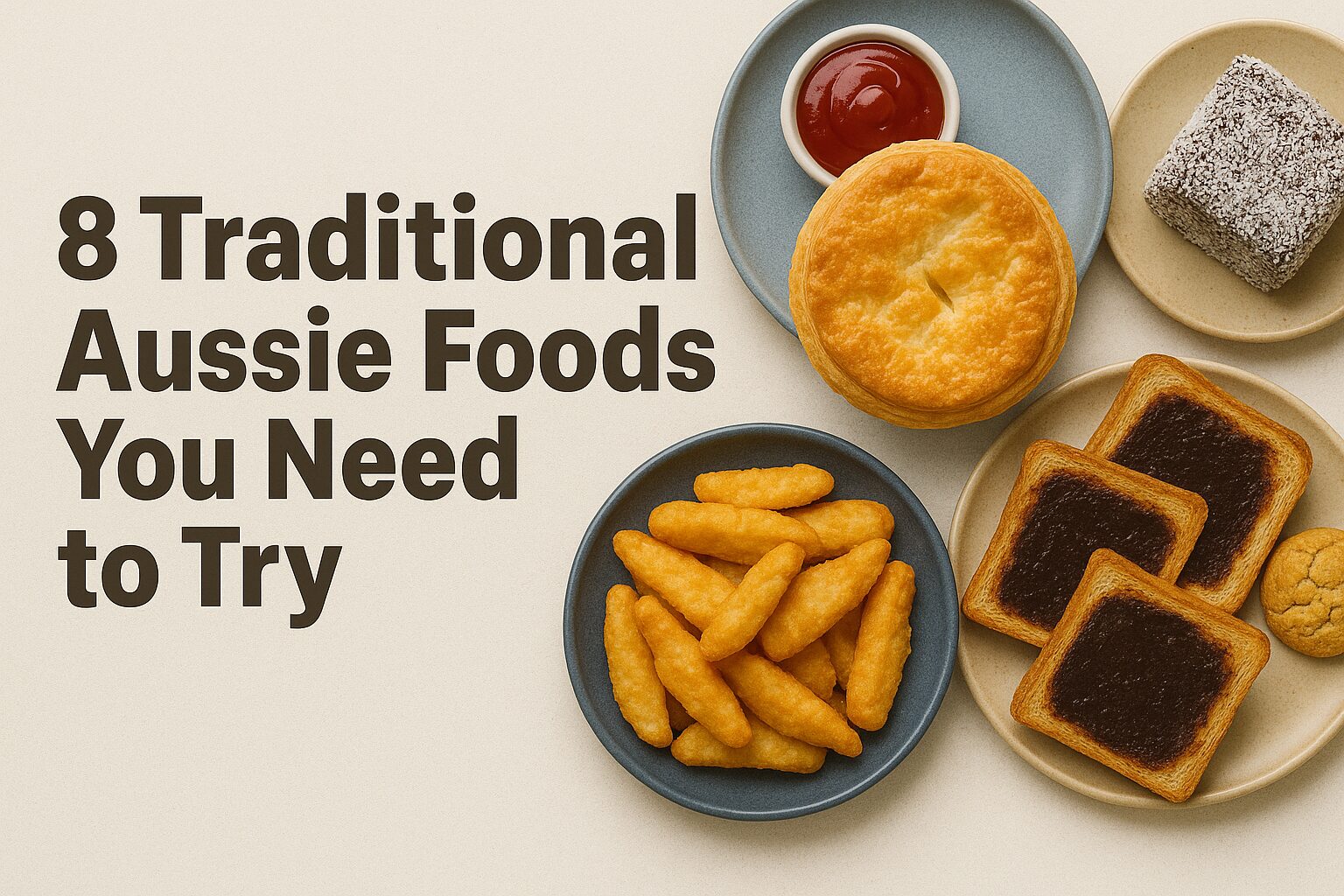Food Recap: Uncovering Australia’s Culinary Heritage
Australian food culture is typically described as multicultural, modern, and diverse—but beneath the flat whites and the avocado toast is a rich heritage built up over two millennia. From ancient Aboriginal food to colonial comfort food, traditional Australian food excels. And it’s not nostalgia—it’s pride, sustainability, and rediscovery.
In recent years, chefs and average Aussies have been turning to the foods that helped define the nation’s palate. The drive to embrace indigenous ingredients and resuscitate past recipes is well under way—and no surprise why. These dishes don’t just taste wonderful—they’ve got stories to tell.
Why Indigenous Cuisine Is Gaining Respect Again
First Australians have, for over 60,000 years, farmed and cooked using native produce that are as tasty as they are healthy. It’s only now, however, that this traditional practice is finally stepping into the culinary spotlight after all these years in the shadows.
Bush tucker, or native Aboriginal food, consists of an astounding number of native Australian fruits, seeds, herbs, and proteins indigenous to Australia and Australia only. Some of the highlights of the ingredients include:
- Kakadu Plum – Loaded with vitamin C and antioxidants
- Wattleseed – Roasted, nutty flavor ideal for breads and desserts
- Lemon Myrtle – Citrus herb used in teas, sauces, and as a seasoning
- Kangaroo Meat – Lean, sustainable, and ethically produced
- Bush Tomato – Earthy, rich, and a central ingredient in most outback dishes
And now, these foods are appearing on plates in restaurants nationwide—not as fads, but as respected part of a greater food heritage. Native-owned restaurants and food companies are reclaiming and serving up this cultural wisdom, dish by dish.
Colonial Comforts: The Dishes That Stuck Around
Though bush tucker is over a couple of thousand years old, one of Australia’s most recognized foods has its origins in Australia’s British colonial history. Though not sophisticated, they have survived.
Some of the following are a few of these iconic originals:
- Meat Pie – A counter takeaway meat pie with minced meat and gravy and typically served hot with tomato sauce. Every bakery has its own version.
- Damper – A plain bush bread traditionally cooked in campfire coals. Serve warm with butter, golden syrup, or jam.
- Sausage Rolls – Seasoned meat wrapped up in a flaky pastry. Hot, preferably, school fetes and family barbies.
- Anzac Biscuits – A biscuit consisting of oats and golden syrup, crunched up and turned golden-brown, named after the Australian and New Zealand Army Corps.
- Pavlova – A crispy meringue outside with a light inside, topped high with cream and fruit. Whether or not it’s Aussie or Kiwi is still debated, but one thing’s for sure—it’s delicious.
These dishes are everywhere in daily life and special occasions. They’re comfort food, and they keep popping up everywhere from sporting events to holiday meals.
Modern Australian Cuisine: A Fusion of Past and Present
What’s exciting today is the manner in which chefs are merging traditional Australian and indigenous ingredients with global techniques. Restaurants like Attica in Melbourne and Orana in Adelaide have built whole menus around indigenous ingredients, reimagined with a modern twist.
You might encounter items like:
– Kangaroo carpaccio with native herbs
– Pavlova with finger lime pearls
– Damper rolls with infused saltbush
– Emu tartare with bush tomato relish
This is the direction in which Australian cuisine is headed: not only towards fusion, but towards true innovation. Chefs are not asking “what’s fashionable?” but “what’s ours?”—and then taking it from there to create dishes.
Why This Revival Matters
More interest in true Australian food isn’t about taste—it’s about culture. It’s about:
- Respecting Aboriginal food systems and knowledges
- Reducing reliance on foreign ingredients
- Preserving indigenous and sustainable agriculture
- To share a distinctly Australian story through food
When food trends are changing so rapidly, there is something comforting in looking inwards—to what has always been. It’s not necessarily to discover new flavour; it’s about establishing identity.
Final Thoughts
Australia’s heritage foods are more than what sit on a plate—they’re part of a richer cultural story.
From the ancient, tried-and-tested ways of cooking Aboriginal, through to the sustaining foods copied by British colonizers, and up to the cutting-edge fusion of the two being created in the kitchen today, this is a food culture built upon evolution, reverence, and reverence for the earth.
Whether it’s damper and billy tea by a campfire or lemon myrtle roast chook at a trendy Sydney restaurant, the truth is: Authentic Australian food is finally receiving its due
Hunger for more?
Discover our Food page for recipes, Indigenous ingredient guides, and chef interviews—or discover this “Australia food by CNN” to discover more about native food culture.



